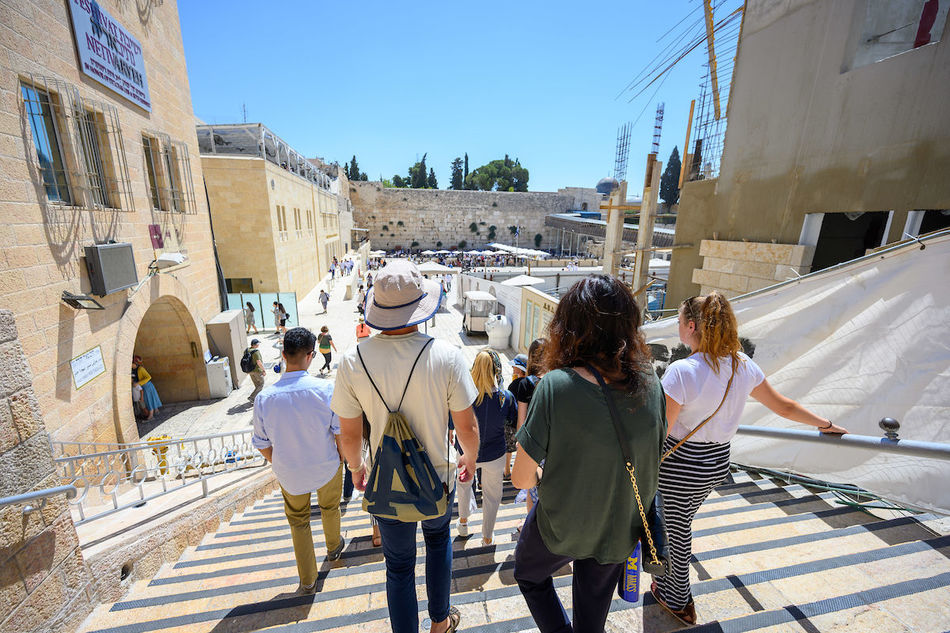Living stones

Originally published by the Office of Public Affairs and Communications.
Just as the sun was rising on a Sunday in late July, a dozen Notre Dame undergraduate students filed into the lobby of the University of Notre Dame at Tantur. Less than 24 hours before, the members of the group had landed at Tel Aviv’s Ben Gurion Airport. Today, they were embarking on a walking tour of Bethlehem. The highlight of the itinerary was clearly a visit to the Church of the Nativity, but it was evident from the outset this would be about more than a pilgrimage.
They filed out, walking through Tantur’s ample landscape, replete with olive trees, grape vines and a small but initially productive archaeological survey area, and through a steel gate at the edge of the property. Then down a narrow dirt road, to a wider, four-lane road, where on weekdays hundreds of Palestinians cross through the checkpoint and wait to catch the bus into Jerusalem. The students walked along the edge of the security wall, then through the checkpoint turnstile themselves, to get into Bethlehem.
The scenery changed dramatically. On the Palestinian side, graffiti covered much of the wall the height of an arm’s reach, much of it political in nature. You didn’t need to be able to read Arabic to get the message. In one scene, there was a depiction of a dove with an olive branch, a symbol of peace, yet the dove was wearing a flak jacket and had a target painted over its breast. It was perhaps the first sign many of the students had seen of the tension in the region. Perhaps it was not unexpected, but it certainly gave way to reflection.
The intermixing of moments of spiritual and personal reflection, and moments of jarring, evocative reality, typifies the course. That’s part of the intricacy of the Holy Land: It is of singular significance to the three Abrahamic religions, and that layering is evident throughout. But woven into that is a territorial and political conflict that many have heard about, but relative few have observed up close. Perhaps no other place put the geopolitical dynamic in focus more clearly for the group than the visit to Hebron.
Read the story in full here.
Originally published by at jerusalem.nd.edu on November 22, 2019.